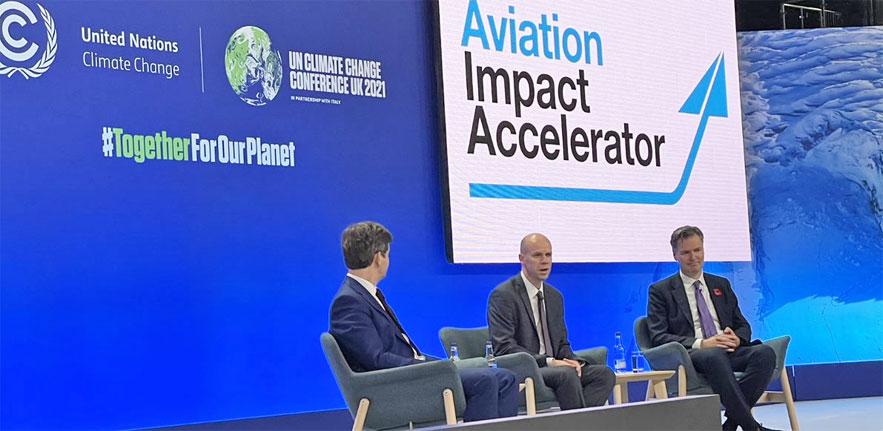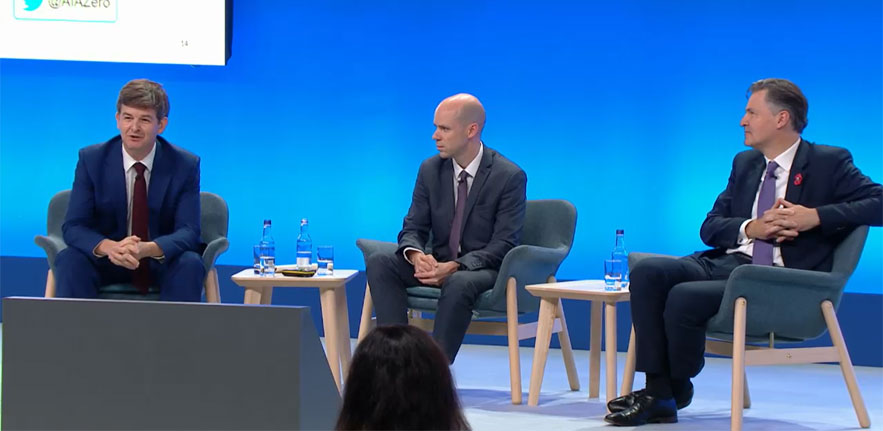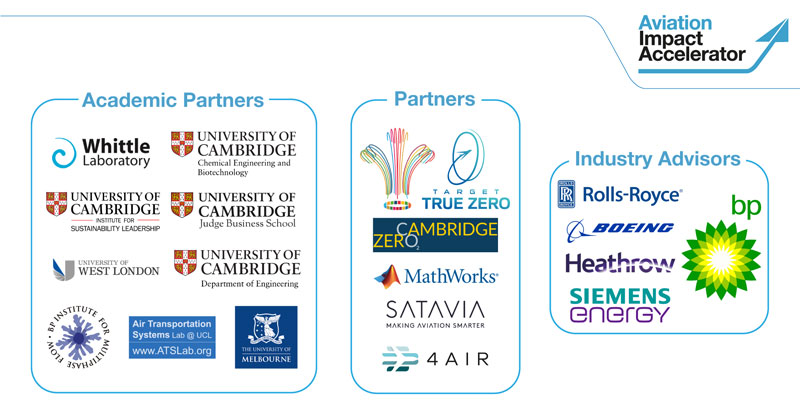
26 January 2022 - Miruna Rapeanu and Beth Barker reflect on the challenges and the next steps for the Aviation Impact Accelerator following COP26.
On 10th November 2021, over 89,000 commercial flights took off around the world. That same day was the official transport day at COP26, where many eyes turned towards aviation. Responsible for around 2% of all human-induced CO2 emissions, this sector is widely acknowledged as one of the hardest to abate. The strict physical and regulatory constraints on flight, together with the long timelines required to implement new technologies in aircraft, represent significant barriers on the path to net zero aviation. However, focused technology development has the potential to unlock significant change within the industry. These technology developments and innovations would then need to be backed by related sectors, policy makers and the public in order to deal with the complexities of their implementation at scale.
COP26, attended by over 35,000 participants, including 120 heads of state, represented a major opportunity to share innovative ways to tackle challenges including achieving climate neutral aviation. Representatives from the Aviation Impact Accelerator (AIA) project, led by the University of Cambridge, attended the summit to outline its mission to develop of an interactive, open-source simulator mapping the whole aviation system and the technological advances that could accelerate its journey to climate neutrality. While there is no silver bullet for achieving climate neutral aviation, the simulator will highlight possible pathways, including the use of sustainable aviation fuels, hydrogen combustion and electrification. These options have the potential to significantly reduce emissions, but the huge uncertainty surrounding the resource, technology, investment, policy and behavioural change required means that more in-depth analysis is needed to reveal a clear path forward. This analysis calls for a multi-disciplinary and multi-organisation approach, and as such the University of Cambridge has assembled a team of experts from across academia, business and civil society.
The AIA participated at COP26 through two events, the first of which was the World Economic Forum’s Target True Zero event – “Catalyzing Action on Novel Propulsion”. As knowledge partners of the initiative, the AIA presented some of the initial technical findings of their model. The second event, “Accelerating Aviation to Climate Neutrality”, consisted of a fireside chat between AIA project lead Prof Rob Miller, CISL director of policy Eliot Whittington and Heathrow CEO John Holland-Kaye, who explored the challenges and opportunities associated with climate-neutral aviation, as well as providing a sneak peek into the AIA’s simulator prototype.
A major point underpinning the AIA’s research is the fact that CO2 emissions are only one part of the story when it comes to the negative impact aviation has on the climate. By taking into account non-CO2 emissions, such as nitrogen oxides, water vapour and soot – the total climate impact of the industry is shown to be over two times larger than that of CO2 emissions alone. However, the total climate impact of non-CO2 emissions holds high levels of uncertainty, with further research being required in order to reduce this uncertainty. It is therefore vital that all emissions are considered when investigating, communicating and making decisions about the technologies that will help to deliver climate neutral aviation.
Some of the initial findings of the AIA’s modelling discussed during the COP26 “Catalysing Action on Novel Propulsion” event included the viability of using hydrogen combustion for long-range flights, together with the importance of aircraft design in harnessing the full potential of liquid hydrogen as an aviation fuel. Additionally, the climate implications of using blue and green hydrogen were explored; this topic is highly relevant to other industries who are also considering hydrogen as a potential energy carrier. In the emerging battery-electric aviation market, key technology unlocks such as reducing the empty weight of aircraft and advancements in battery energy density were analysed to understand the full opportunity for change.
Whilst uncertainty remains around these different technology options, policymakers are signalling greater ambition to reduce the climate impact of aviation. At the COP26 World Leaders Summit, over 40 countries endorsed the Breakthrough Agenda, agreeing to work together to deliver clean, affordable and reliable power by 2030, as well as ensuring global availability of affordable, renewable and low carbon hydrogen by the end of the decade. This is extremely important for aviation, as green electricity and hydrogen represent some of the main “ingredients” used in producing alternative aviation fuels. Moreover, representatives from 23 nations that are responsible for over 40% of the global aviation emissions have signed the International Aviation Climate Ambition Coalition declaration. This declaration recognises that international aviation contributes significantly to climate change through both CO2 and non-CO2 emissions and sets out a goal of promoting the development and deployment of innovative new low- and zero-carbon aircraft technologies that can reduce these emissions.
Half of the top 10 countries contributing to passenger CO2 emissions have not yet signed the declaration, indicating that a solid set of evidence is needed to increase our understating of the sector before we can devise a clear, realistic and actionable plan to realise the goal of climate neutral flight. As the AIA model continues to develop and reveal more insights into the complex technologies and connections underpinning the sector, ongoing collaboration with industry will be central to its success.
If you are interested in finding out more about the Aviation Impact Accelerator or in contributing to the project as a partner or sponsor, please contact AIA manager Beth Barker at beth.barker@cisl.cam.ac.uk.








